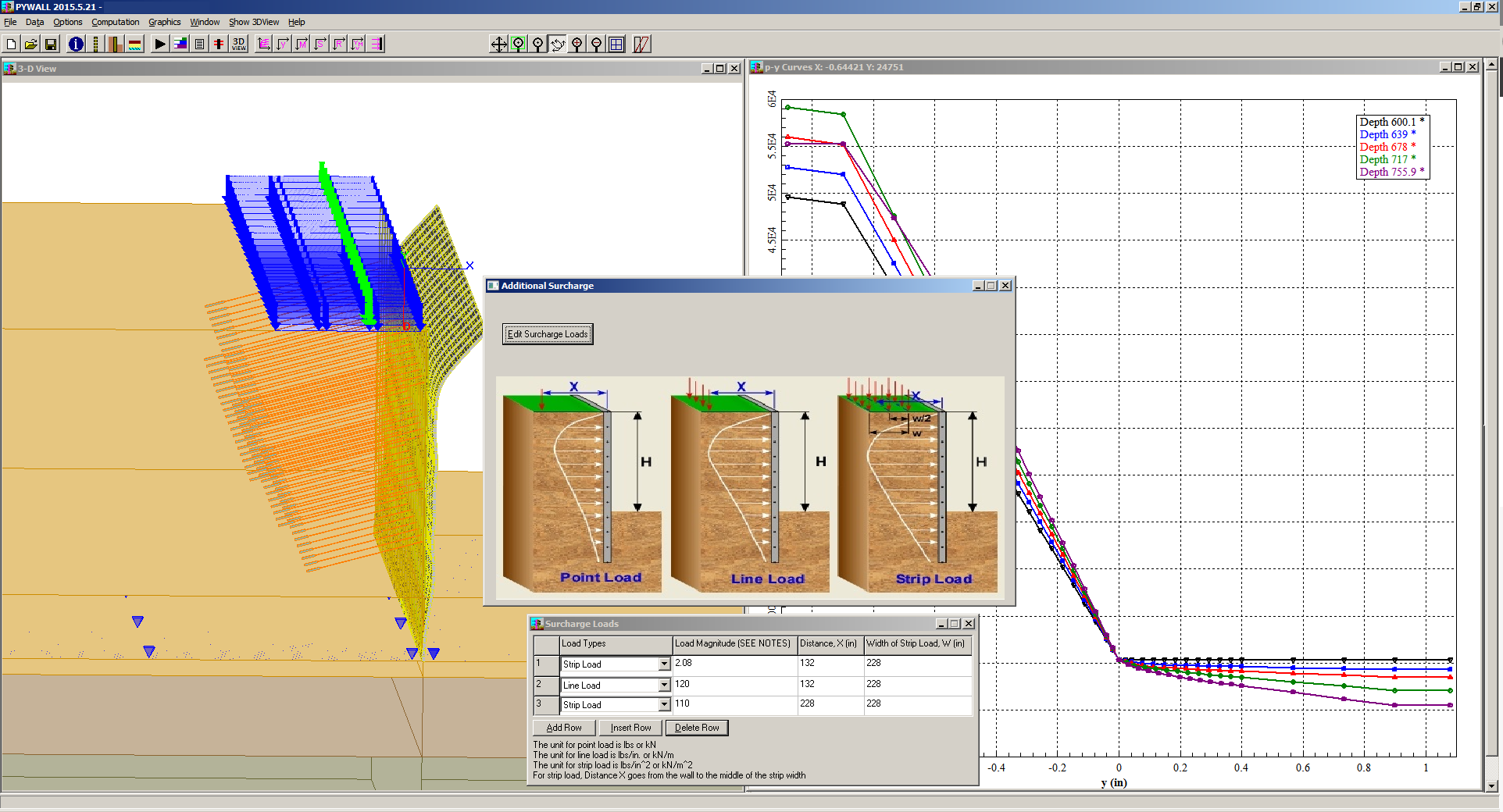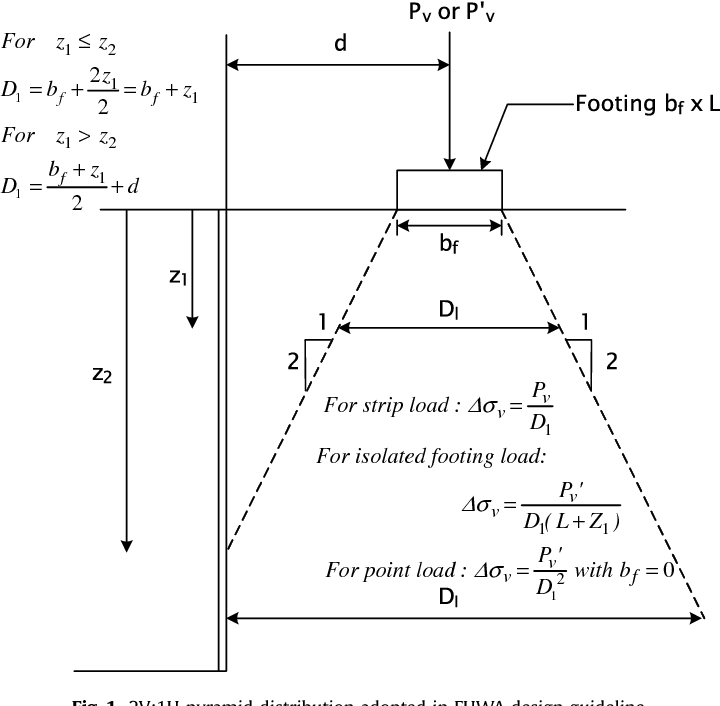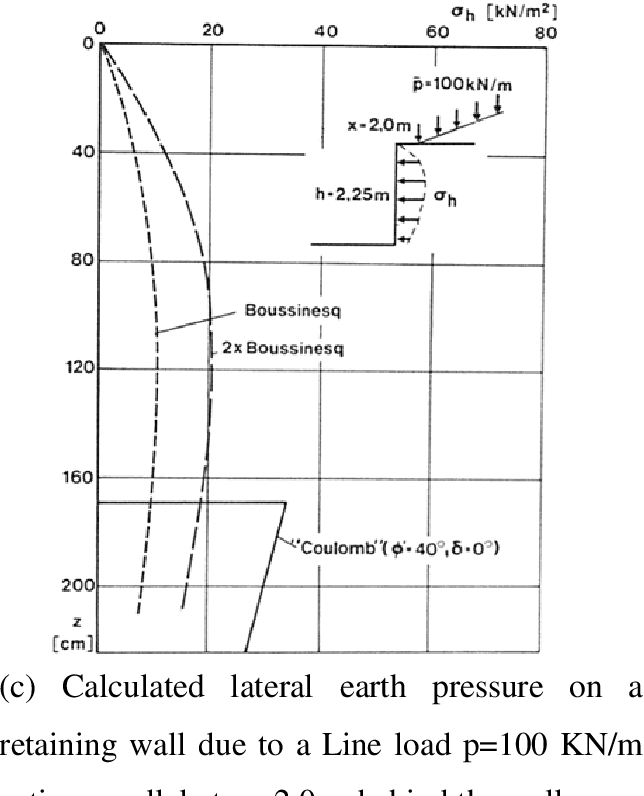Surcharge location is 0 feet from shoring retaining wall height of retaining wall shoring is 10 feet traffic surcharge 𝑞 𝛾 𝑃 𝐻𝑒𝑞 30 pcf given in this example x 3 5 ft from table 1 105 psf.
Line load surcharge retaining wall sheet.
However this isnt the case if the retaining wall is.
The earth pressure is acting.
Login to enable the formulas.
Wall from earth pressure surcharge load water earthquake etc.
Area load point load line load and or strip load.
The stiffness of these elements can be modeled as linear elastic springs or fully nonlinear springs.
It can be either dead loads for example sloping backfill above the wall height or live load which could result from the highway or parking lot paving or adjacent footing.
Surcharge loads acting on retaining walls are additional vertical loads that used to the backfill soil above the top of the wall.
Struts or braces may be specified at any height s of the wall.
In this example even thought the surcharge load is the same relative to the size of the earth pressures it seems much less significant.
Retaining wall design example with surcharge load.
The live load surcharge is positioned to produce the maximum design load.
Height to resultant hr line load surcharge resultant rl overturning moment from point load ml.
Vertical line load behind wall l lb ft or n m height of retaining wall h ft or m horizontal distance from wall to line load d ft or m output.
Four types of surcharge loads can be specified.
Loads and forces acting on retaining wall and their calculations the next step is to enter the loads on the wall as defined above.
Surcharge load on plan surcharge 10 0 kn m2 applied vertical dead load on wall wdead 85 6 kn m applied vertical live load on wall wlive 3 8 kn m position of applied vertical load on wall.
In this example the surcharge from a 10kn m line load located just outside the area of influence could contribute and extra 113 to the load on the shoring frame.
In figure 1 where a semi gravity wall is shown the live load surcharge is placed over any element of the ers for settlement and bearing analysis while the live load surcharge is placed behind all the elements of the ers for sliding and eccentricity analysis.
Retaining walls generally have little vertical load other than self weight and weight of any soil on a footing.
Additional surcharge loads may be specified in the back side of the wall.


































